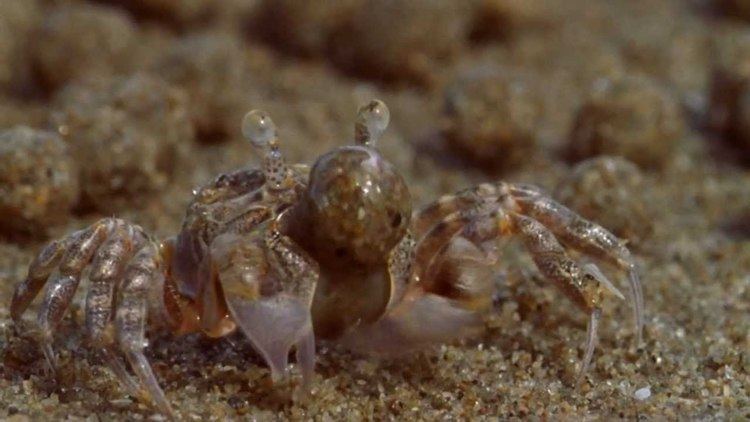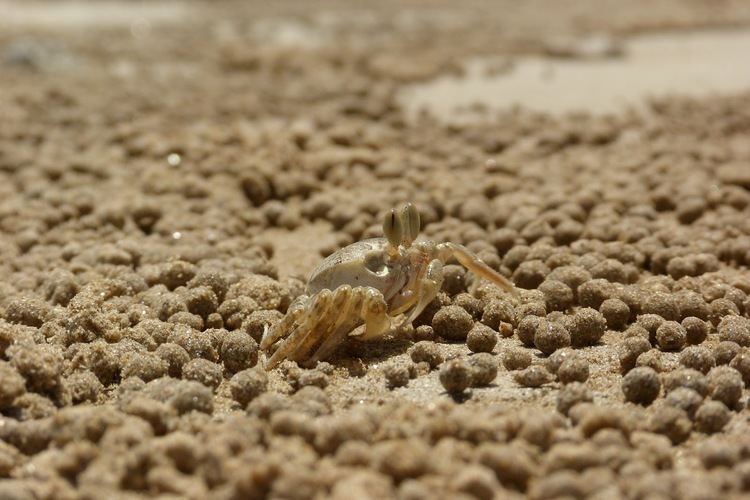Infraorder Brachyura | ||
 | ||
Representative species Scopimera globosa, Dotilla myctiroides, Scopimera inflata, Scopimera bitympana, Scopimera crabicauda | ||
Sand bubbler crabs making sediment balls on an australian beach from bbc s blue planet hd
Sand bubbler crabs (or sand-bubblers) are crabs of the genera Scopimera and Dotilla in the family Dotillidae. They are small crabs that live on sandy beaches in the tropical Indo-Pacific. During the low tide, they form inflated sand pellets that are disintegrated by the incoming high tide.
Contents
- Sand bubbler crabs making sediment balls on an australian beach from bbc s blue planet hd
- The sand bubbler crab
- Description
- Distribution
- Ecology and behaviour
- Taxonomic history
- Species
- References

The sand bubbler crab
Description

Sand bubbler crabs are small crabs, around 1 cm (0.4 in) across the carapace, and they are characterised by the presence of "gas windows" on the merus of the legs; in Dotilla, these windows are also present on the thoracic sternites. A similar system has evolved in parallel in the porcelain crab genus Petrolisthes.
Distribution

Sand bubbler crabs are widespread across the Indo-Pacific region, where they occur abundantly on sandy beaches in the tropics and sub-tropics.
Ecology and behaviour

Sand bubbler crabs live in burrows in the sand, where they remain during high tide. When the tide is out, they emerge on to the surface of the sand, and scour the sand for food, forming it into inflated pellets, which cover the sand. The crabs work radially from the entrance to their burrow, which they re-enter as the tide rises and disintegrates the pellets. The material consumed by sand bubbler crabs has a very low concentration of organic matter, which is concentrated by egestion of indigestible material.
Taxonomic history

The first sand bubbler crab to be described was Cancer sulcatus (now Dotilla sulcata) by Peter Forsskål in 1775. The genus Scopimera was originally described as a subgenus of Ocypode by Wilhem de Haan in 1833, although the first species, Scopimera globosa was not validly described until 1835. At the same time, De Haan tried to erect the genus Doto for Forskål's Cancer sulcatus, not realising that the name was preoccupied by the mollusc genus Doto. The first available name for that genus was published by William Stimpson in 1858, who called it Dotilla. Ongoing revisions are likely to split the current genus Scopimera into at least two genera.
Species
Eight species of Dotilla and fifteen of Scopimera are currently recognised:
